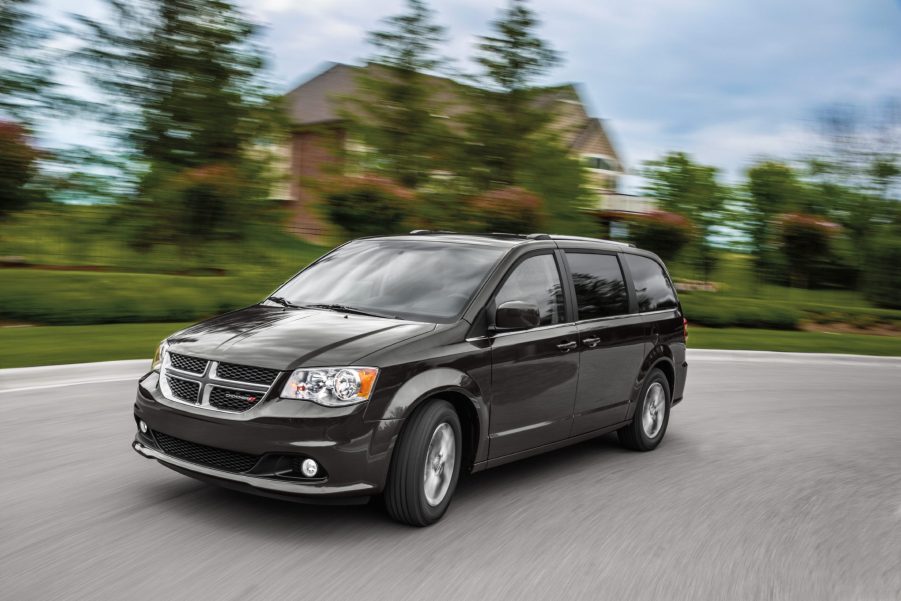
So Long Soccer Moms: SUVs May Be Killing off the Minivan
For many reasons, the minivan is the perfect vehicle for certain people. It’s earned a reputation for being a family hauler, with seven seats and room for the dog. But upon digging a little deeper, it’s becoming clear that minivans are struggling to compete in today’s car markets. And over the years, there have been a few signs that automakers are pulling back on minivans in favor of better-selling SUVs.

A brief history of the family minivan
With the oil crisis shaping cars of the early 80s, quite literally, station wagons and sedans were suddenly getting smaller to get better fuel efficiency. That left a significant hole in the market for large families, who needed the three rows of seating that station wagons of the 50s and 60s once touted. And because consumer focus was shifting toward fuel economy and low prices, an entirely new vehicle needed to be created.
Of all automakers, Chrysler was the one to do it, introducing the Dodge Caravan in 1984. It had seating for eight, and cargo space to spare, all while fitting into a traditional parking spot. The design saved Chrysler from bankruptcy and spiraled into the body style we know of today.
But perhaps one of the most revolutionary, albeit strange minivans ever made didn’t come along until 1990. The Toyota Previa, the predecessor of the Toyota Sienna, changed a lot of things about traditional minivans that formed them into what we know today.
For starters, rather than a boxy, wagon-like style, the Previa had a smooth egg shape for maximum fuel efficiency. It also had an optional all-wheel drive system, for tackling inclement weather and rough terrain. Though, the Previa was no ordinary minivan.
Rather than most family cars of the era, the Toyota Previa was mid-engined. On the upside, that maximized interior space, but on the downside, it made maintenance a chore. Though the cars were, more or less, bulletproof, and models can still be found today with well over 300,000 miles.
Together, the Caravan and the Previa make up the basic skeleton of the modern minivan. Three rows of seating, round body, and maximum interior cargo space with good gas mileage. But there’s a shift in markets that are making minivans a bit obsolete.
First minivans killed the station wagon, now SUVs are killing the minivan

The moment Chrysler debuted the Caravan in 1984, station wagon’s days were numbered. They didn’t have the interior space of a minivan and were often hard to see out of. Minivans changed all that, leading to the discontinuation of the last American station wagon, the Buick Regal TourX, which went out in 2020. But as more three-row SUVs are built, minivans may soon face the same fate.
In fact, the transition from the minivan to the SUV has already begun. Production of the Dodge Grand Caravan, the successor that started it all, ended on August 21st, 2020. Just over a year ago. And considering the Grand Caravan was the best-selling minivan of 2019, things are looking grim for the segment.
The number of new minivans left on sale in America is rather startling. There’s the Toyota Sienna, which is now only available with a hybrid powertrain, and its direct competitor the Honda Oddessey. Then there’s Chrysler with the Pacifica and the Voyager. And finally, there’s the Kia Sedona, which is soon to be replaced by the Kia Carnival. That’s it, those are your options.
Collectively, those four models sold roughly 280,000 units throughout 2019 according to GoodCarBadCar. Considering the Jeep Grand Cherokee, which is also available with third-row seating, sold 240,000 units that same year is a sign that minivans are on the chopping block. And even new minivans, like the Kia Carnival, aren’t being marketed as minivans anymore.
The newest minivans on the market aren’t even minivans

Known as a multi-purpose vehicle, or MPV, the Kia Carnival is blending the third-row capabilities of a minivan with the utility advantages of an SUV. But this isn’t to be known as a soccer mom’s go-to vehicle, it’s for more than just shuttling kids around.
Despite the marketing fluff, fundamentally, there’s little difference between a minivan and an MPV. In fact, the Toyota Previa was marketed as an MPV back in the 90s, but everyone today refers to it as a minivan. What you have here is just one more car losing the minivan title, which will leave just four minivans available come 2022.
So SUVs have already become the best-selling body style nationwide. And because it’s the lucrative choice, more and more automakers are ditching their roots, like Dodge ditched the Caravan, in an effort to sell bigger, better SUVs. Times are changing, and truth be told, it’s not looking like the minivan has much of a future. Though that’s speculation, and I’d love to be proved wrong.


